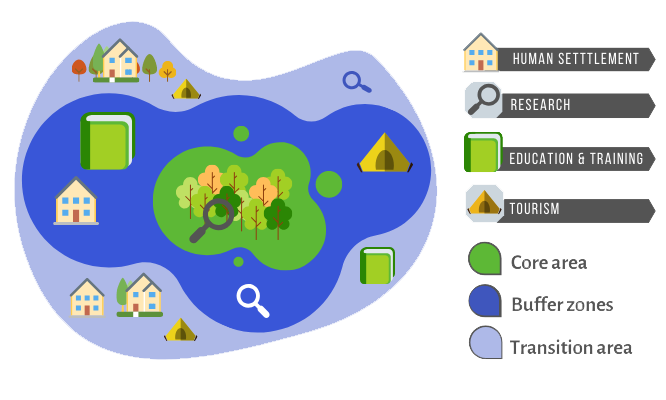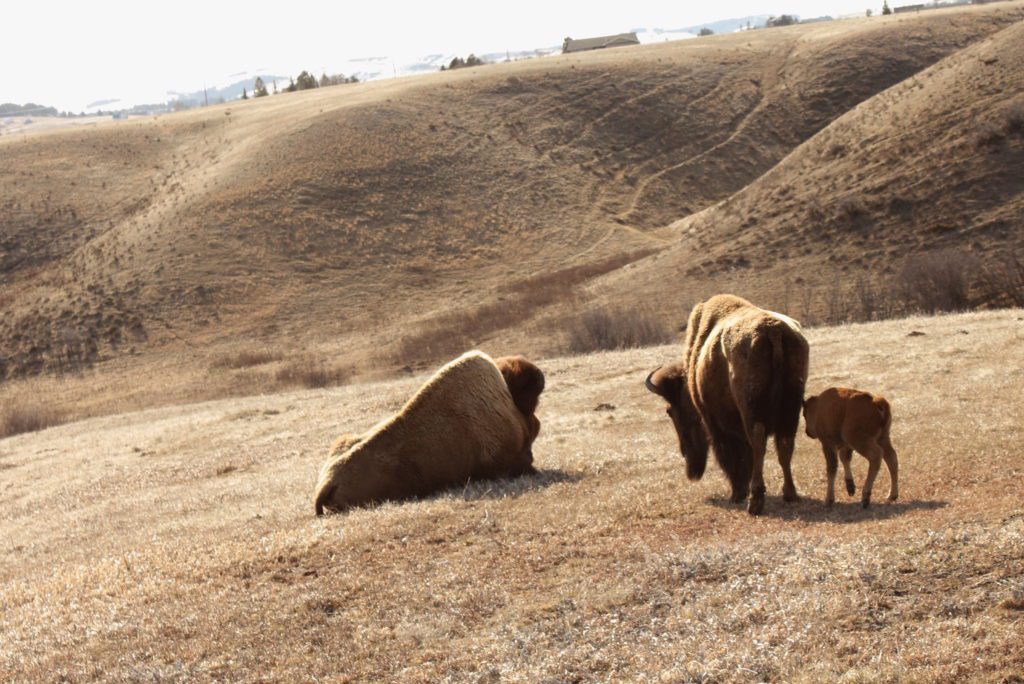Conservation Conversation
There are many, MANY different kinds of conservation programs out there. For now, let’s focus on Biosphere Reserves, and a special non-profit led conservation effort in North America called the American Prairie Reserve.
Biosphere Basics
Biosphere reserves are very special not only in layout, but in what kind of activities are allowed (and in fact, required) within their boundaries. They are made of three main zones:
Core Area: where research is primarily carried out and is also known as the Strictly Protected Zone
Buffer Zones: surround the core area(s) where research, sustainable human settlements and ecotourism can be carried out
Transition Area: surrounds the buffer zone, allows for more human activities and focused on fostering a healthy human-environment relationship
A heavy focus on not only the biological diversity of an area but also the human cultures that exist permeates the biosphere reserve program. These special pieces of lands are “learning places for sustainable development“. Another very unique factor in this program is that while all biospheres are overseen by UNESCO (who also oversee World Heritage Sites) the day-to-day management of the land is left in the hands of the local government or even the people living there.

What Makes a Biosphere Reserve?
These reserves can be terrestrial, coastal or marine, and cover different ecosystems like rainforests, mangroves, wetlands, and of course, grasslands. They can be small, big, highly populated, have lots of tourism, or be secluded islands. The requirements for biosphere reserves are a bit loose but that is done on purpose. Keep in mind that each reserve is monitored by the local people there, and by keeping requirements loose they have a bigger pool of reserves and bigger pool of research to learn from.
You can learn more about the nitty-gritty details on UNESCO’s website, but here are the basics. Biosphere reserves should include:
- Include regions that are representative of the biogeography of an area, including humans
- Be an area of significant biodiversity
- Provide opportunities for sustainable development
- Be of an appropriate size
- Include the three zones: core area, buffer zone, and transition area
- Include arrangements to include local governments and communities
- Have a clear plain for how the reserve will be run, including research and management of the land
More Common Than You Think
There are 714 biosphere reserves in 129 countries (as of April, 2021). They vary quite a bit in size, from the smallest located in Israel: the Mount Carmel Biosphere Reserve (266 sq km). And the largest being not the Amazon rainforest (which is, in fact largely a biosphere reserve) but the Aïr et Ténéré Biosphere Reserve (23,970,000 ha) in Niger, Africa. The loose requirement of “be of an appropriate size” means that even small parcels of land can be well protected and preserved.
American Prairie Reserve
The American Prairie Reserve (APR) is a non-profit led conservation effort in one of North America’s last large expanses of prairie. This unique effort consists of large pieces of public land that is slowly being added onto by purchasing land from private sellers. In this way, they hope to stitch together three million acres of land to preserve the prairie. Currently APR consists of 419,000 acres so there is still room to grow.

The land that makes up APR has a very healthy bison population. So healthy in fact, that they were able to donate more than 4,000 pounds of bison meat to help feed the people of Montana during the COVID-19 pandemic. Great acts of generosity coupled with their active work with nearby tribal communities means that APR is fairly well liked.
There is some opposition however from local ranchers. Since much of APR’s land is now being purchased from private sellers many people fear the loss of the American cowboy and their way of life. As land prices soar and ranchers struggle to make ends meet, they are often forced to sell their land. It does beg the question: could a change in management strategy to include the rancher’s land while allowing them to still work it be implemented? Something along the lines of how biosphere reserves are managed might be the way to go.
Looking Forward:
There are many actions that people can take to become a part of the conservation conversation. One of the biggest ways is by voting for green policies, and leaders to support them. Write to local government leaders and let them know that you support sustainable energy, reducing waste from factories, and other green policies. If you don’t make your voice heard, they will never know people are upset and want change. Spread the word and rally your friend to do the same.
Sources/Further Reading:
UNESCO. (2021, March 24). Man and the Biosphere (MAB) Programme website. https://en.unesco.org/mab.
Kerr, A. (2017, November 21). The Trump Administration Takes Out 17 International Biosphere Reserves.
American Prairie Reserve website. https://www.americanprairie.org/
Hegyi, N. (2019, December 8). Big Money Is Building A New Kind Of National Park In The Great Plains.
Did you spot an error or have questions about this post? Email Nicole Brown.
